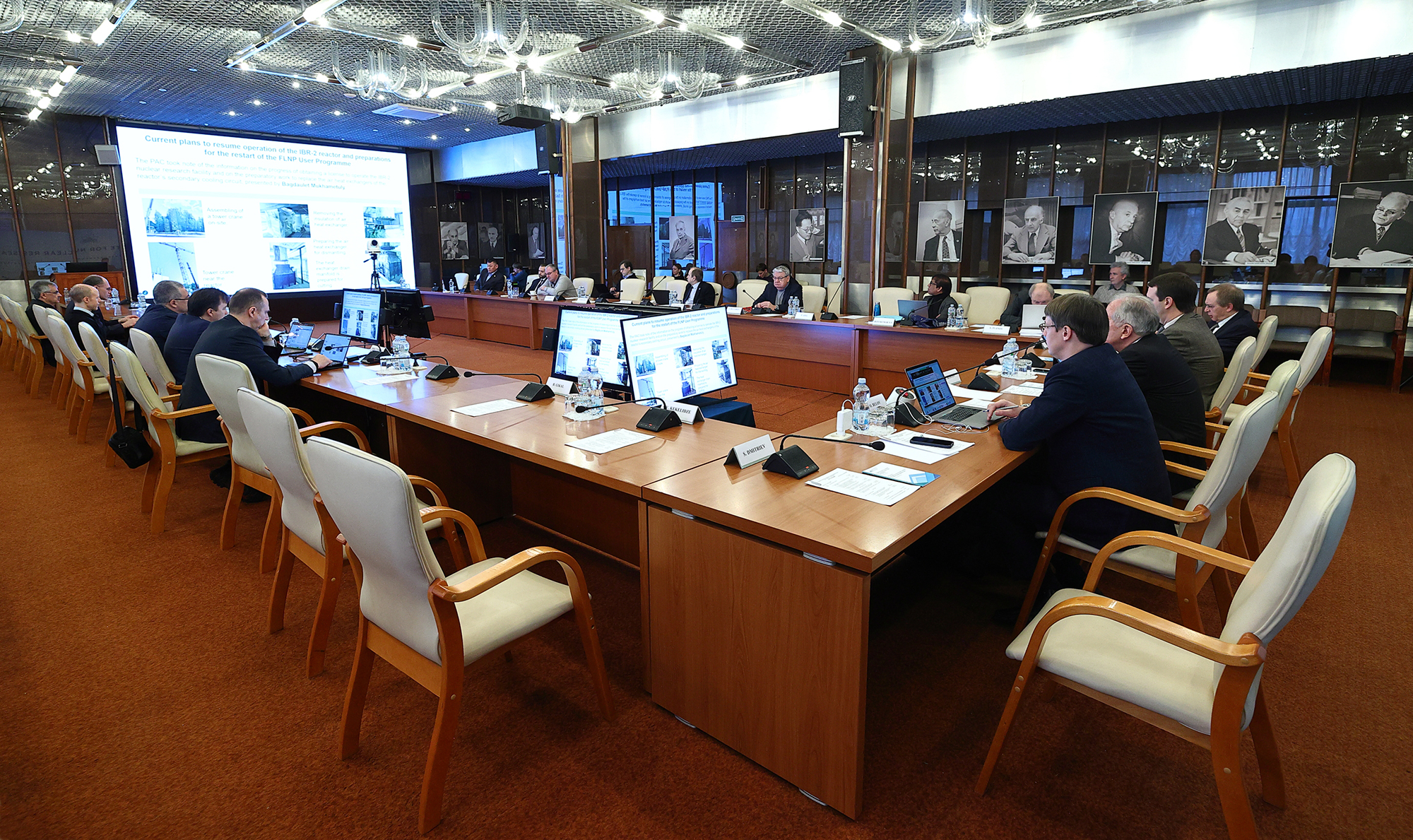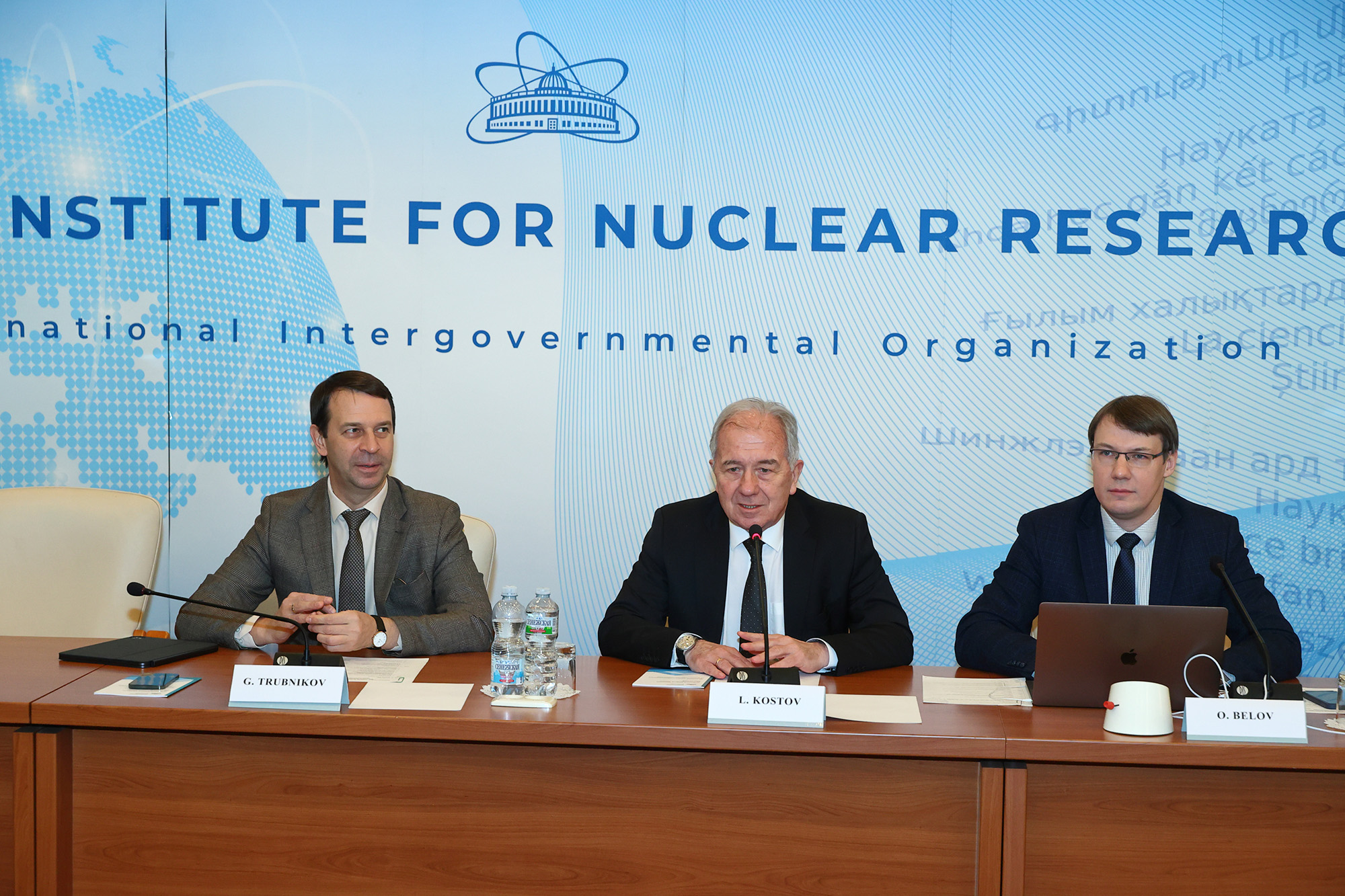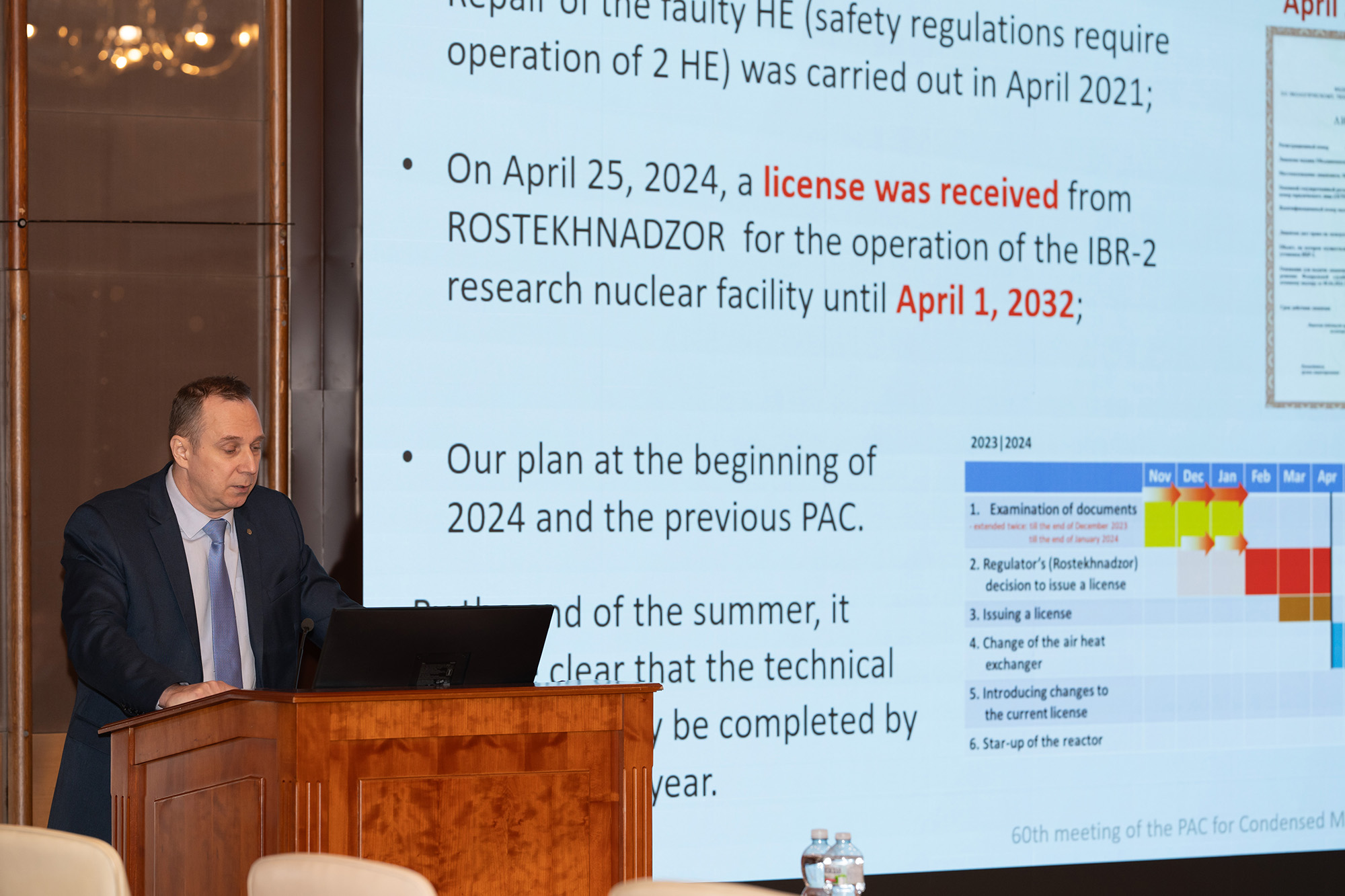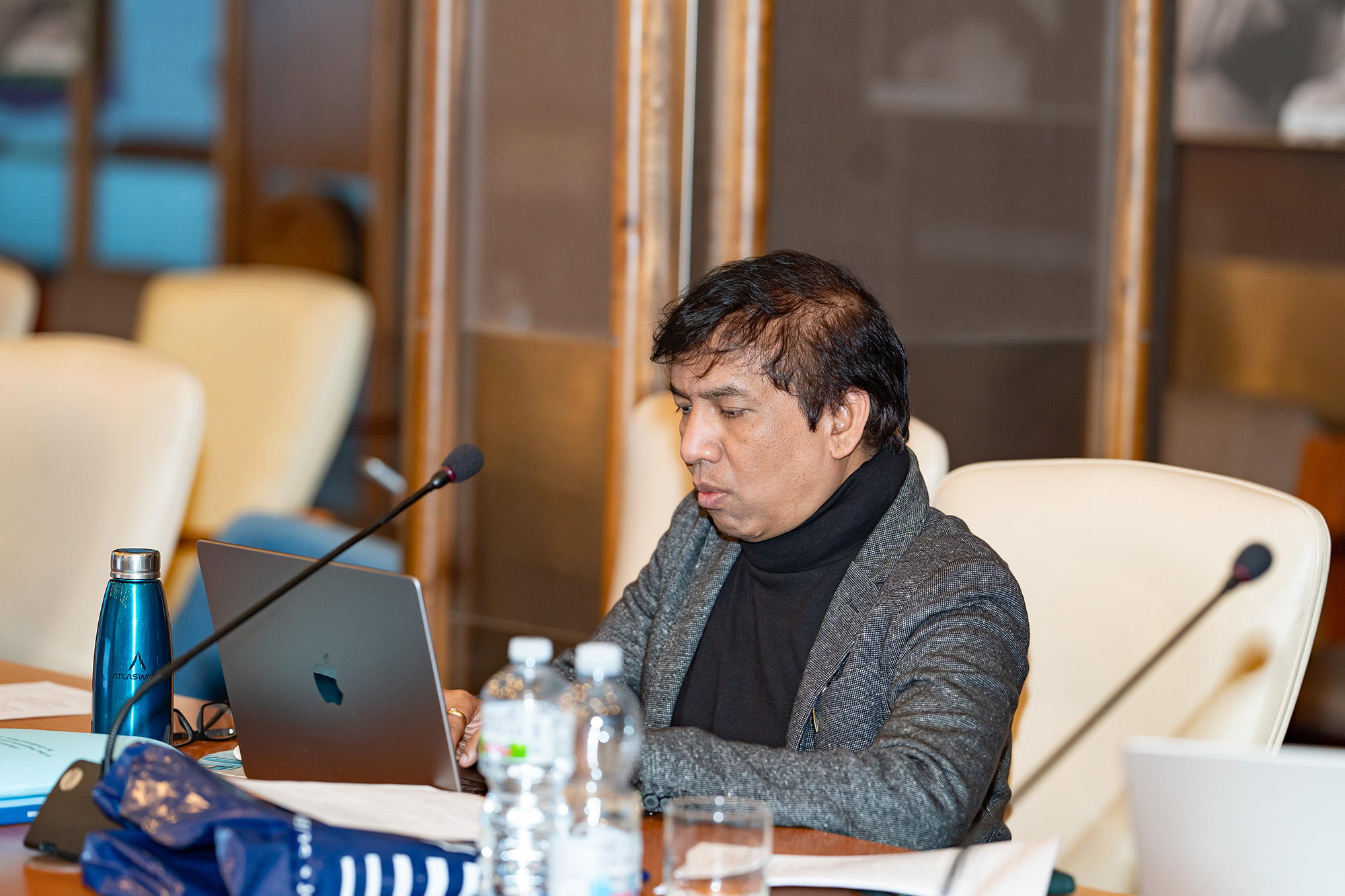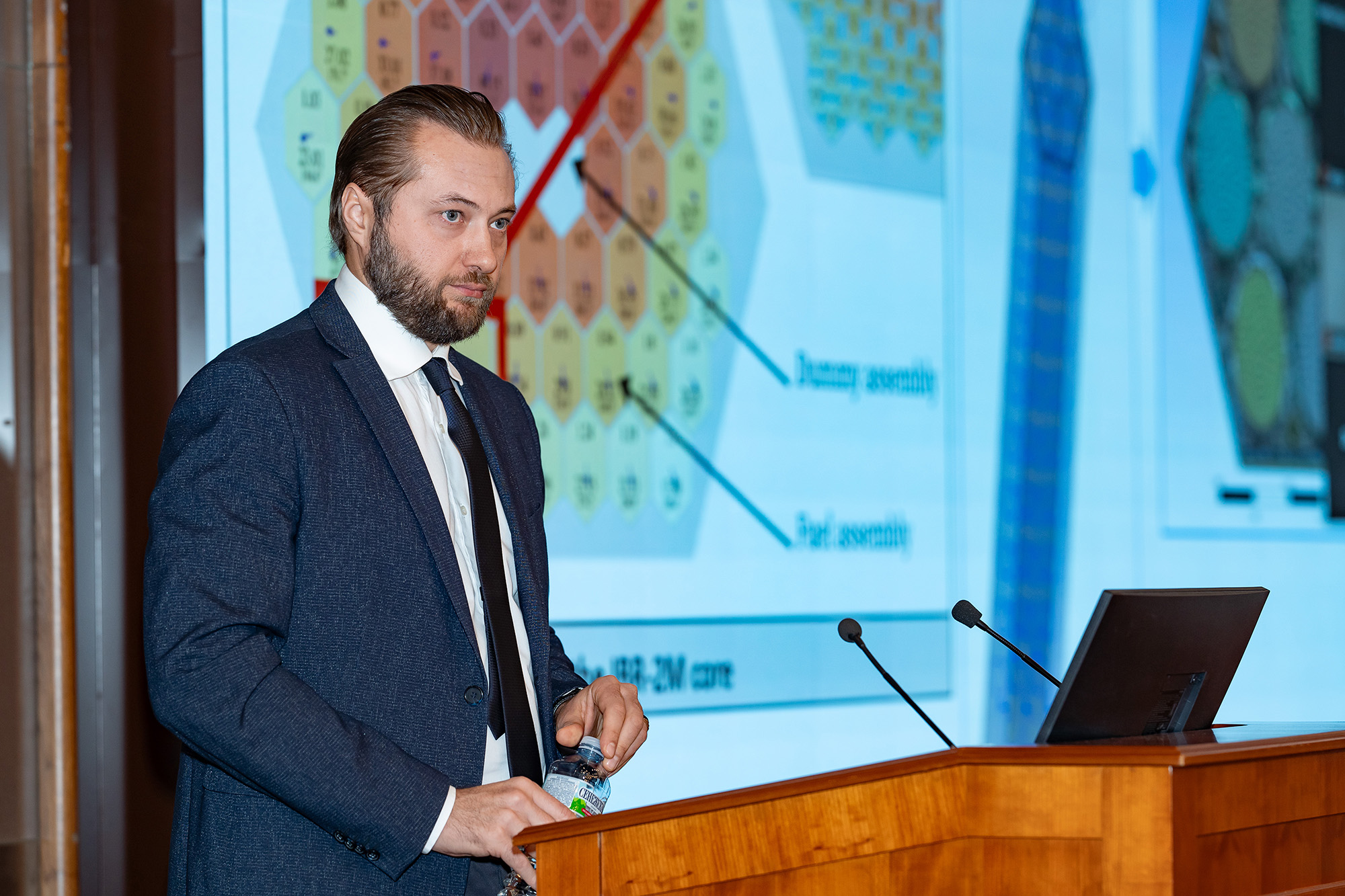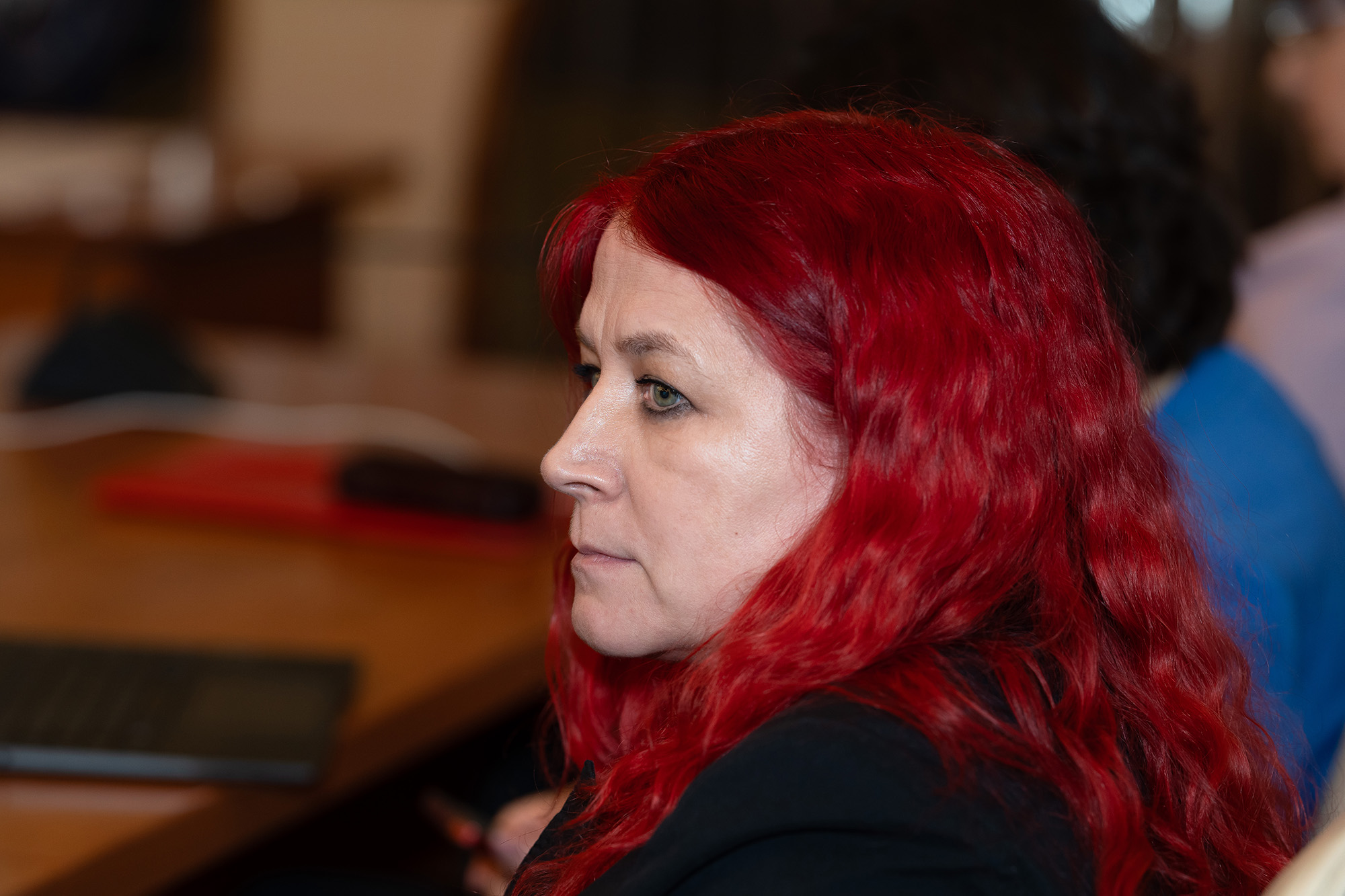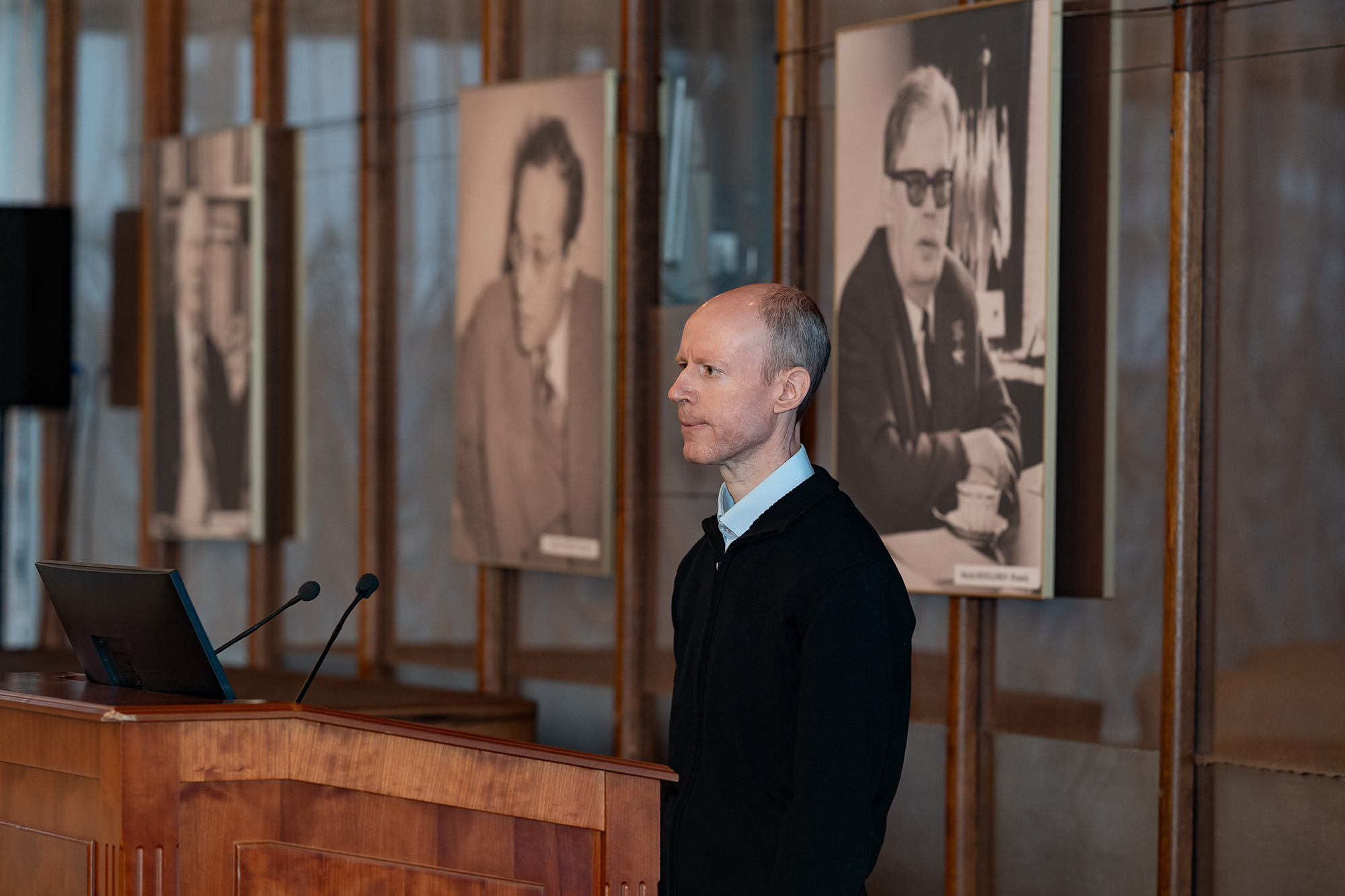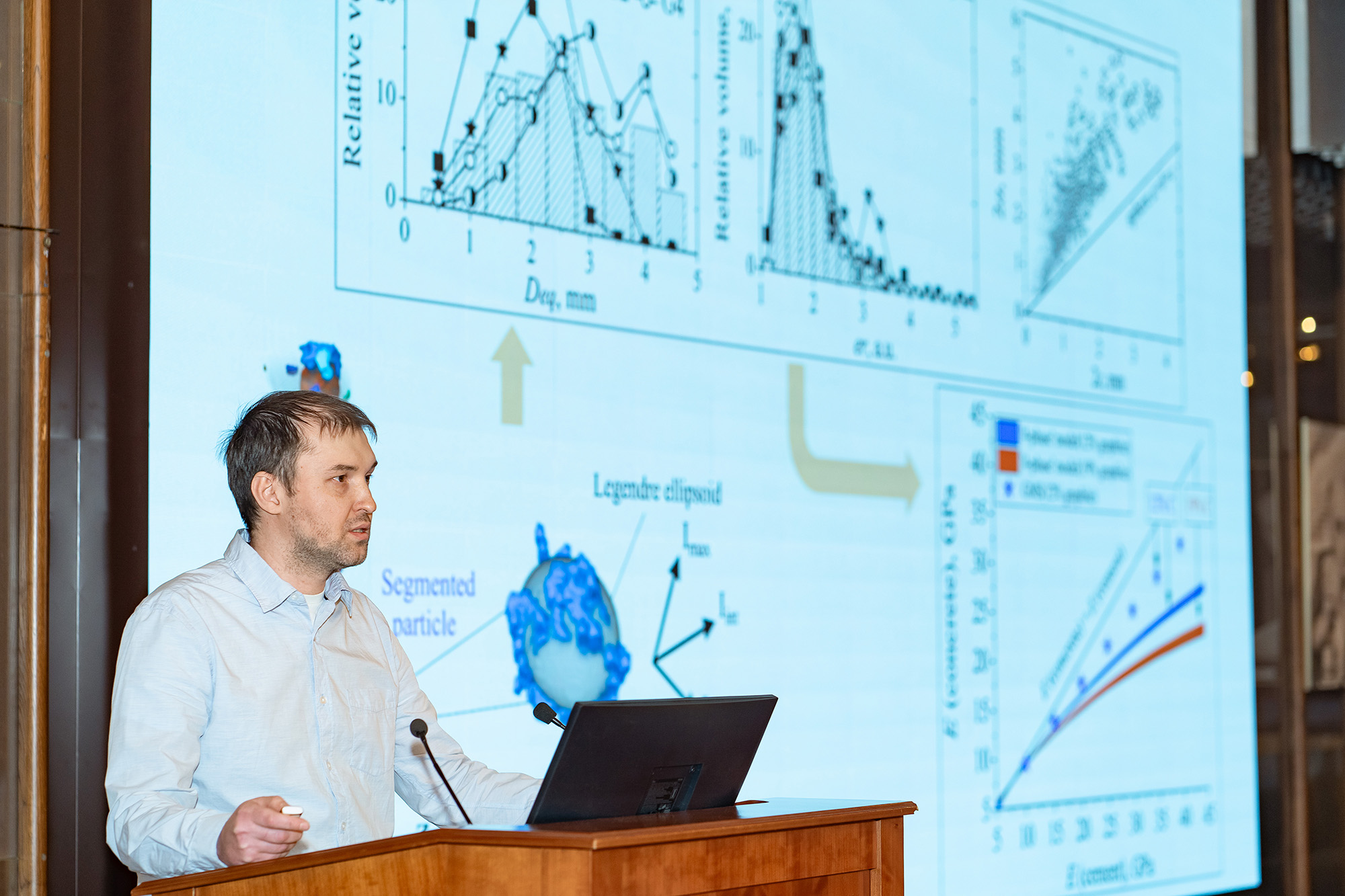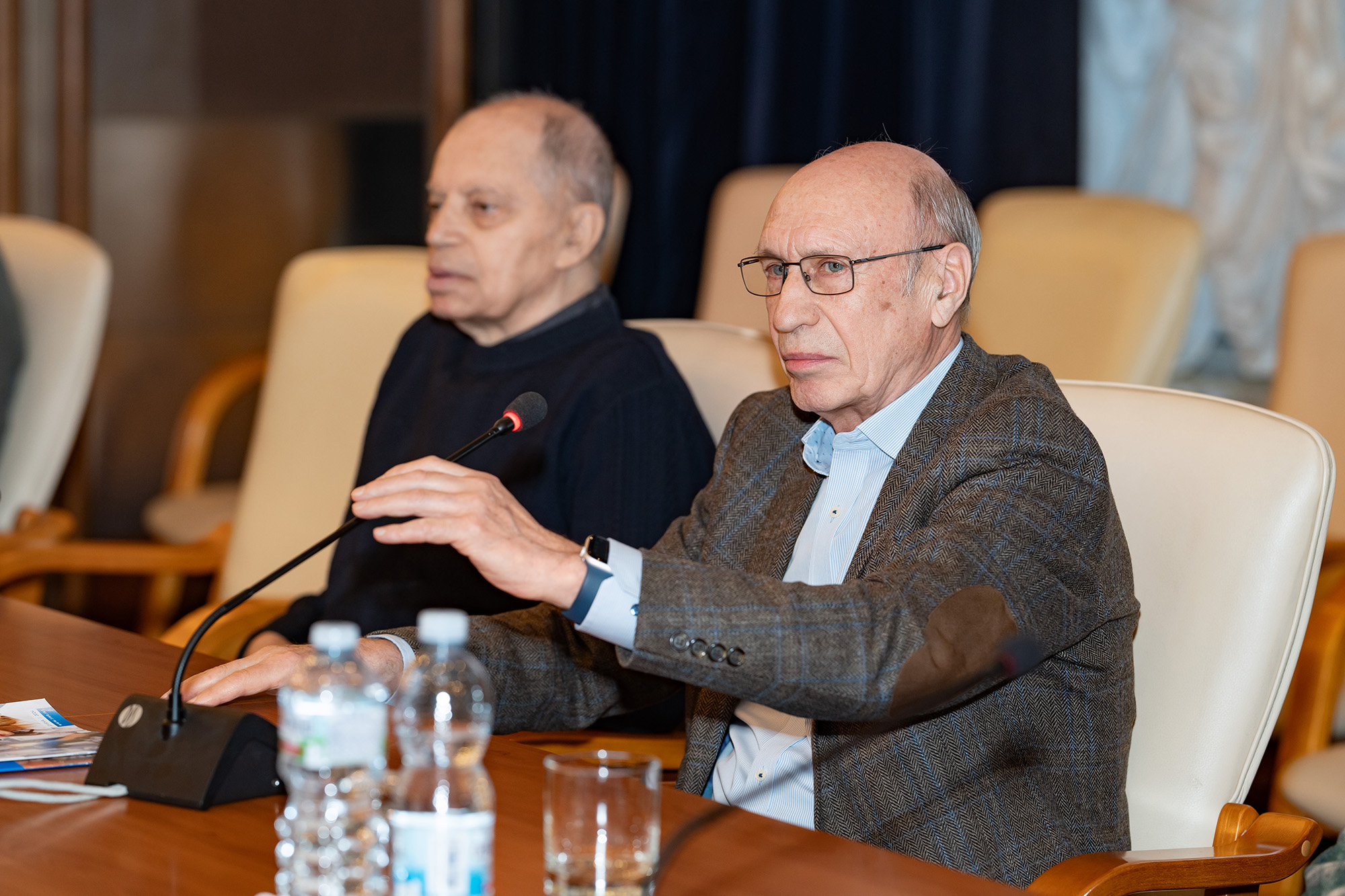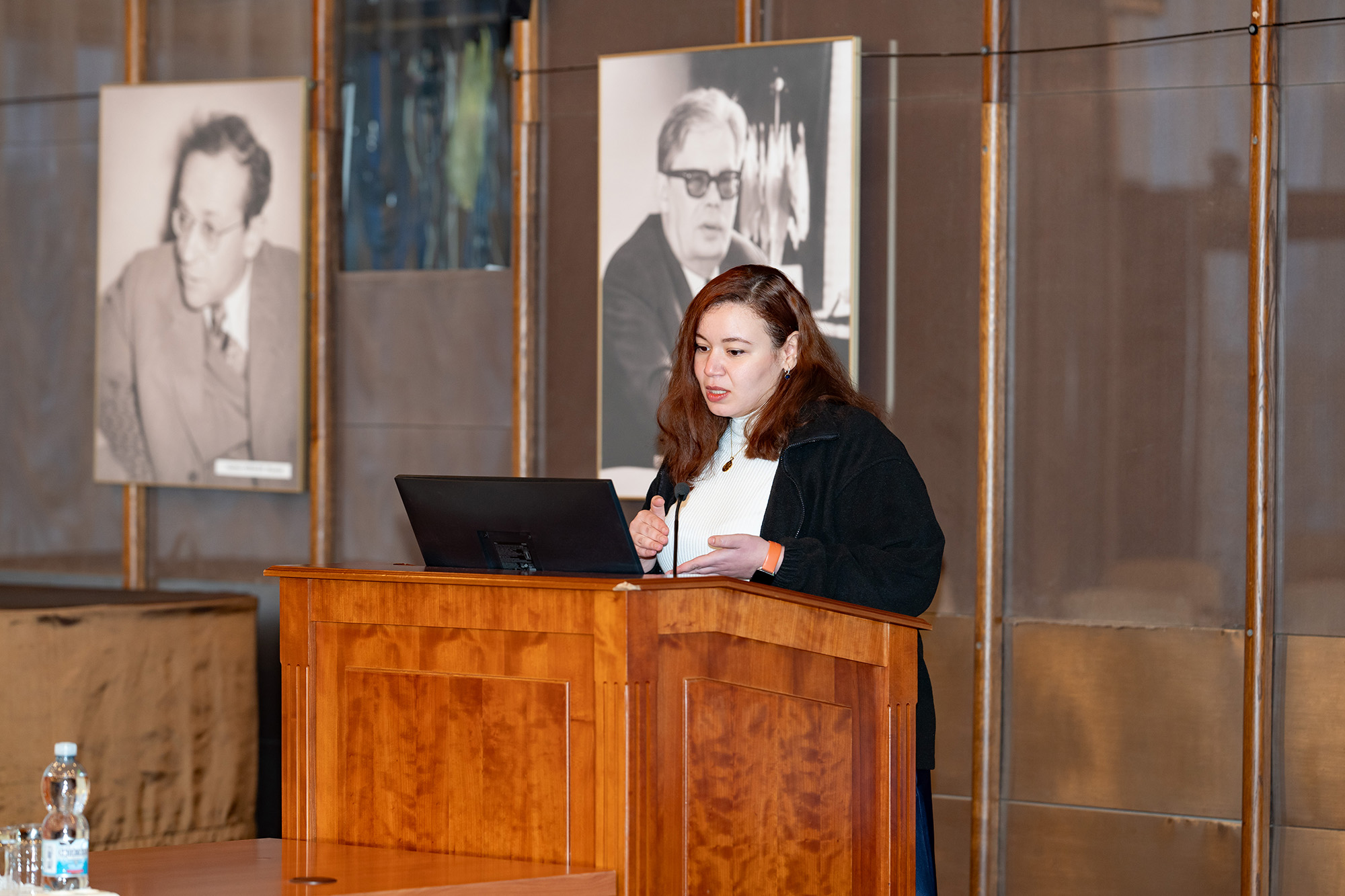PAC CMP meeting: preparation for IBR-2 launch and spectrometer complex development
News, 30 January 2025
On 27 January 2025, the JINR International Conference Centre hosted the 60th meeting of the Programme Advisory Committee for Condensed Matter Physics (PAC CMP). The PAC members discussed preparation for the launch of the IBR-2 Reactor and the prospects for the development of its spectrometer complex. Young scientists of the Joint Institute shared the latest research results in condensed matter physics.
Chair of the PAC CMP Dénes Lajos Nagy opened the meeting with a talk on the implementation of the 59th PAC meeting recommendations. JINR Vice-Director Latchesar Kostov spoke about the Resolution of the 136th session of the Scientific Council (September 2024) and the decisions of the Committee of Plenipotentiaries of the Governments of the JINR Member States (November 2024).
Director of the Laboratory of Neutron Physics at JINR Egor Lychagin talked about the progress in preparation for the launch of the IBR-2 Reactor. He said that at the end of 2024, the Institute received a licence from the Federal Service for Environmental, Technological and Nuclear Supervision (Rostekhnadzor) to operate the IBR-2 Pulsed Reactor, which has been in a state of technical shutdown since 2021. FLNP employees have already started performing all necessary technical work at the reactor. Under the supervision of Rostekhnadzor, in 2024, the repair of the air heat exchanger equipment, due to the malfunction of which the IBR-2 was stopped, was successfully completed.
The first cycle of operation of the FLNP JINR pulsed reactor and the first experiments with extracted neutron beams are planned to be carried out in February 2025. By this time, most of the facilities of the IBR-2 spectrometer complex will be ready for the test launch of the reactor. “Currently, our main goal is to maximise the lifetime of the IBR-2 Reactor at high power,” Egor Lychagin emphasised. He said that the Laboratory of Neutron Physics continues to enroll candidates for expert groups to implement a new user program, the start of which is scheduled for the autumn of 2025.
Head of an FLNP sector Maxim Bulavin presented results of modelling the dynamics of fast pulsed reactors and plans for the development of model approaches. One of the most important tasks to be solved in the design of a new highly intense pulsed reactor at JINR is the theoretical description of the processes leading to fluctuations in pulse energy, and the study of mechanisms for the formation of power reactivity feedback using a mathematical model. In accordance with this, FLNP JINR developed a model for the IBR-2 that is designed to solve several main tasks related to fluctuations in the power of pulsed reactors, aimed at studying the causes of fluctuations, determining optimal operating parameters, developing the design of the core, and testing theoretical approaches to studying the dynamics of pulsed reactors.
The proposed model is a computer program that allows simulating the dynamics of a pulsed reactor using certain parameters (pulsation frequency, average reactor power, damping time of transverse vibrations of a rod, power reactivity feedback parameters, etc.), boundary conditions, and calculation methods.
The calculations performed using this model allowed the specialists to conclude that fluctuations in the power of pulsed reactors can be caused by at least two factors: the thermal expansion of the fuel and the dynamic bending of the fuel rods or the bending of the fuel assembly in a pulse.
“Achieving optimal reactor operating modes at the required power level directly depends on a deep understanding of thermomechanical processes and the use of proper design solutions,” Maxim Bulavin emphasised.
In order to carry out a qualitative verification of the mathematical models being developed at FLNP and confirm their viability, scientists intend to continue working on the development of new software. Thanks to this, they can propose new methods for optimising the operation of experimental facilities.
Head of an FLNP Department Denis Kozlenko provided an update on the modernisation and development of the IBR-2 Reactor facilities covering recent years. The IBR-2 spectrometer complex currently consists of 14 facilities for condensed matter studies. In addition, FLNP employees are developing two new ones: an inelastic neutron scattering spectrometer in inverse geometry (the BJN Project) and a small-angle scattering and imaging spectrometer (the SANSARA Project).
A new detector based on ZnS scintillators with a large angular aperture was developed, manufactured, and installed in the operating position for the High Resolution Fourier Diffractometer (HRFD). “We expect the neutron intensity detected at the HRFD to increase by more than ten times,” Denis Kozlenko noted. “This will open up new opportunities for using the instrument in high-precision studies of crystal structure and microstructure of materials.” A new Fourier chopper was installed in the neutron Fourier Stress Diffractometer (FSD), and the creation and installation of modules for the new ASTRA Detector System was finished.
Specialists replaced the central part of the mirror neutron guide and upgraded the detector system of the DN-6 Diffractometer. According to Denis Kozlenko, this facility is currently one of the world’s most advanced tools for studying high-pressure neutron scattering methods. The detector system of the DN-12 Diffractometer was upgraded as well, with a new cryostat producedand tested. These facilities’ improvement will provide scientists with more opportunities for studying the structure and magnetic properties of substances.
The construction of the second detector module and an additional sample measurement position of the SKAT Diffractometer is nearing completion. The production of detector preamplifiers and the installation of neutron counters are scheduled for 2025. This will allow the researchers to double the number of experiments carried out at the facility. In addition, works are underway to adapt the configuration of the EPSILON Diffractometer to texture measurements.
As part of the new BJN Inelastic Neutron Scattering Spectrometer project, a prototype of the focusing analyser module was designed and manufactured in 2024. The researchers are producing and selecting crystals of highly oriented pyrolytic graphite for the facility’s focusing analyser. Thanks to its record-breaking luminosity, the BJN Spectrometer will help solve a wider range of tasks and open up new opportunities for neutron spectroscopy in atomic and magnetic dynamics studies of condensed matter.
The event’s programme continued with scientific presentations by employees of the Laboratory of Neutron Physics at JINR. An FLNP researcher Ivan Zel discussed the results of using the neutron tomography method in structural analysis of the Kunya-Urgench meteorite, rocks, and cement materials intended for the disposal of radioactive waste. The talk by a senior assistant at the FLNP Nanobiophotonics Centre Heba Esawii was devoted to the analysis of the conformational dynamics of the Aß-42 peptide in lipid membrane mimetics for studying the molecular underpinnings of neurodegenerative diseases.
An FLNP researcher Anton Rutkauskas took first place in the young JINR scientists’ virtual poster session with his presentation entitled “Structural and vibrational properties of the Cu3Bi(SeO3)2O2Cl francisite at high pressure”. He was selected to give this talk at the 137th session of the Scientific Council, which will take place in February 2025. The second best was an MLIT JINR junior researcher Dina Badreeva (“The influence of phospholipid composition on membrane interaction with amyloid beta peptides within molecular dynamics simulations”), and the third place went to an FLNP research assistant Mikhail Avdeev (“Polymer brushes synthesised by the “grafting-through” approach: characterisation and scaling analysis”).
JINR Vice-Director Latchesar Kostov and Scientific Secretary of the PAC for Condensed Matter Physics Oleg Belov presented honorary diplomas to the authors of the best 59th PAC CMP session’s presentations Olga Lis, Sergei Kurakin, and Bulat Bakirov.
The last item on the agenda was a meeting between the members of the Programme Advisory Committee and representatives of the JINR Directorate. The session finished with the adoption of the PAC recommendations and consideration of proposals for the agenda of the next, 61st session scheduled for summer 2025.
